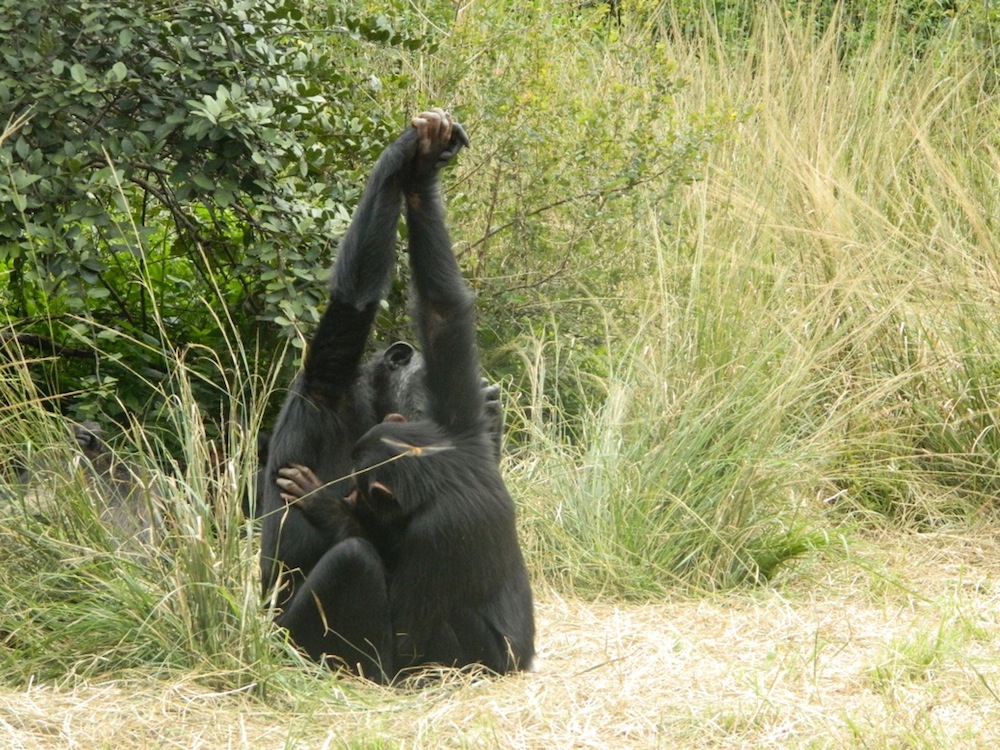When you purchase through links on our site , we may clear an affiliate commission . Here ’s how it works .
Monkeys in Central and South America have amazingly various aspect , from the white - mustachioed visage of the Saturnia pavonia tamarin to the boil - lobster - red-faced skin of the bald uakari . Now , research reveals that New World monkeys rely on facial colouration mostly to acknowledge their own metal money .
" We ground that species that live in little chemical group have develop more complex patterns of facial color , " study researcher Sharlene Santana compose in an electronic mail to LiveScience . " This ( more complex faces ) is also straight for specie that share their home ground with many other closely related specie . "

A baby emperor tamarin gnaws a branch. This species of tamarin lives in small family groups.
In other words , the less potential a imp is to hunt into one of its own , the more complicated itsfacial normal . For example , bald uakaris have a salient , but simple , virtuous red case . These monkeys live in bombastic community that can number up to 100 soul . In contrast , the three - stripy night monkey , or owl rascal , subsist in small home group with mate and offspring only . These nocturnal monkeys sport masklike white - oculus markings against a ground of inglorious fur , a much more complicated pattern .
For monkeys who live in modest groups , complex form may offer more ways to distinguish between mintage , which is significant given how rare it is for one of these monkeys to receive one of its own . For monkey living in larger group , simple facial traffic pattern might allow for honorable acknowledgment of soul and unspoilt communication via facial expressions — an crucial science in a large community . [ Gallery : Monkey Mug Shots ]
The organic evolution of a face

While biologist have long suspected that facial colouring arise due to some evolutionary pressures , Santana ’s research is the first to immobilise down the specific culprits .
She and her workfellow assemble scalawag " patsy shots " of 129 New World coinage ( scamp native to Central and South America ) and ranked them on color pattern complexity , skin pigmentation , and length and colour of facial tomentum . They then analyzed the patterns in terms of the societal life and bionomics of each species , accounting for evolutionary family relationship that would lead to similarities in patterns between snug relatives .
They line up that habitat put pressure on facial organic evolution , such that species that live in the dark , humid forests of the Amazon have darker " beard " and darker hair near thecrowns of their heads , a feature that likely serve them blend in with their surroundings and elude predator . Species that know in areas with lots of ultraviolet radioactivity from the Sunday have grim eye mask , perhaps to keep down glare . imp that make their home far from the equator , in chillier climates , have longer hair on the face , in all likelihood for warmth .

Craziest faces
The researchers also unraveled the evolutionary pressures of social interactions , find that species made up of more isolated mortal had the most elaborate facial patterns . Some particularly fancy monkeys included the black - cap squirrel scalawag , with its black gun muzzle and white middle masque , and the Kuhl’smarmoset , which features long tufts of black hair emanating from its ear .
These way-out facial - color patterns make these monkey suffer out from other metal money , and in that way they allow their kindred to easily spot them in the wild . Species that live in larger chemical group of 100 or more monkeys probably have a bang-up want to recognize individual scallywag ; the research worker speculate that perhaps rather than people of colour patterns , the scallywag see to it outfacial expressionsor the size of various facial features to particular individual . That might be easier to do with simpler facial features .

The researchers contrive to extend the facial complexness study to other primates and other mammals to see if the connection between social behavior and faces holds up . They also hope to take more about how archpriest realize font within their own species .
" Our results shed some light about the cues primates may use to recognize the metal money an individual go to , " Santana say , " but more research is need to further link this finding to how primates use facial characteristics to recognize particular individuals . "















